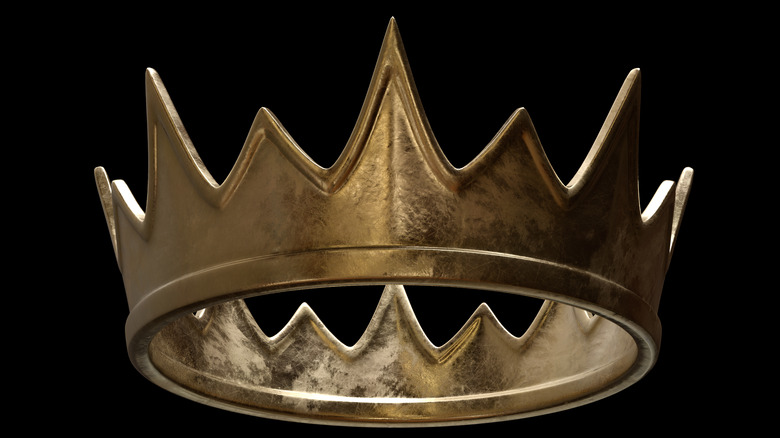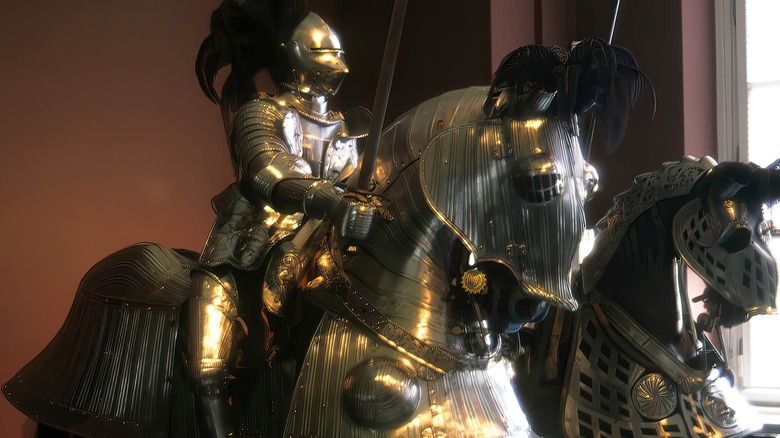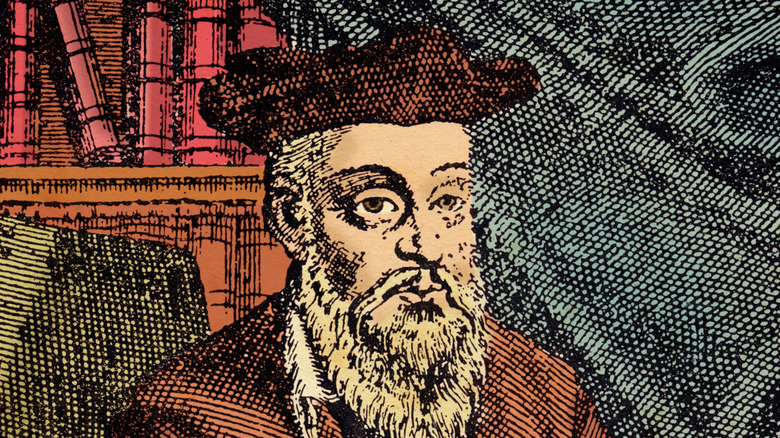How Nostradamus Allegedly Predicted The Death Of The King Of France
Nostradamus was as mysterious to his contemporaries as he is to us. A successful doctor from the south of France, he left home in 1538, aged 35, to wander in the East, apparently meeting mystics and learning esoteric arts (via History). He returned to France about five years later, a changed man. Passing through Italy on his way home, he pointed out a humble Franciscan friar named Peretti and announced that the young unknown would one day be pope. It was a bizarre observation; more bizarrely, it was true. Peretti became Sixtus V.
At home, Nostradamus began meditating every night after complex rituals with bowls of water and herbs. He would fall into strange trances, apparently seeing or hearing hidden things. In the 1540s he began publishing almanacs full of horoscopes and mysterious predictions of the future. His readership exploded. In 1554, now physician to Catherine de' Medici, queen of France, Nostradamus began a massive project called The Centuries: a collection of four-line poems, grouped by the hundred (hence "centuries"), implied to be visions of the future. In 1555 he published a selection of these, pointedly titled "The Prophecies."
'Two wounds in one, to die a cruel death'
Many of these predictions are completely indecipherable; others seem eerily prescient. One of the most famous was Century I, quatrain 35 (hosted by Sacred Texts): "The lion young, the old one shall surmount / in single fight upon the martial field; / He'll pierce his eyes inside his cage of gold / two wounds in one, to die a cruel death."
What could that possibly mean? Two lions, one young and one old, would fight a duel; the young one would pierce the eyes of the older one in a golden cage, killing him. And making two wounds one? What does that mean?
According to Nostradamus' devoted readers, the answer would come four years later, in 1559. The king of France, Henri II, agreed to marry off his sister and daughter to the duke of Savoy and the king of Spain, respectively (per Britannica). This called for a celebration, which culminated in a tournament, with the more athletic men of the wedding party showing off their strength and horsemanship in jousting. When Henri faced a young Scottish nobleman, the festive mood withered: the youth's lance pierced the king's eye through the visor, incapacitating him. Henri died 10 days later.
Mirrors and mirages
However you feel about Nostradamus and the ability of mortal men to discern the future, there is an unsettling quality to the verse's prediction. There were two lions, one young and one old; they met in single combat on a martial field; the young one pierced the older one's eye through a "golden cage" (tournament armor was expensive and heavily ornamented, with gilding and bronze, per the Met Museum); the wound killed the older combattent.
The "two wounds in one" line is more difficult to interpret. It could mean all sorts of things: the wound to the eye, followed by the penetration of the brain; the death of Henri the man and Henri the public figure; or maybe it meant something entirely different, lost to time. The danger for us is finding the answers we secretly want in the inscrutable verses of Nostradamus. Skeptics consider them entirely meaningless, a mirror for the credulous. But if a chill ran up your spine when you saw how closely Century I, verse 36 matched real and unforeseeable events, you may just doubt the doubters. For what can one man know, after all?


